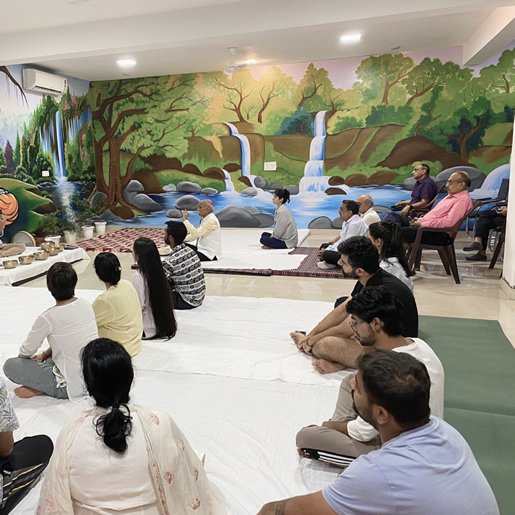Life is complex and unpredictable, full of ups and downs. Life cannot go smoothly over a long time — it tests all of us in different ways. Some days feel like smooth and gentle waves, while others hit like storms. Yet amid the chaos, there are people who seem to bend without breaking. They act like bamboo, bending but coming back straight once the storm subsides. They face pain, setbacks, or rejection, and still manage to grow stronger.
What is their secret? The answer lies in our mental and emotional resilience — not the absence of struggle, but the ability to rise again with wisdom and hope. In fact, many of those people come out stronger after adversity.
As Viktor Frankl, the Holocaust survivor and psychiatrist, wrote:
“When we are no longer able to change a situation, we are challenged to change ourselves.”
We will explore, in this article, what makes resilience possible — what science says about it, and how we can all build a mindset that stays positive no matter what life throws at us.
1. Understanding Resilience: The Art of Bouncing Forward
Resilience is not about being tough or emotionless. It’s about flexibility, bending with life’s challenges and coming back stronger. The American Psychological Association defines resilience as “the process of adapting well in the face of adversity, trauma, tragedy, threats, or significant sources of stress.”
Research from the University of Pennsylvania’s Positive Psychology Center found that resilient people are not born different — they simply think differently. Dr. Martin Seligman, a pioneer in positive psychology, explained that resilient individuals practice “learned optimism” — the skill of reframing negative thoughts into constructive ones (Seligman, M.E.P., Learned Optimism, 2006).
So, resilience is not a trait; it is a mindset, which we can all cultivate with awareness and daily practice.
2. The Neuroscience of Staying Strong
Interestingly, resilience has a biological side too. Studies in neuroscience show that our brains can actually rewire themselves in response to adversity — a phenomenon known as neuroplasticity.
In a 2018 study by Davidson and McEwen, published in Nature Neuroscience, researchers found that resilient individuals show higher activity in the prefrontal cortex, the part of the brain responsible for emotional regulation and decision-making.
This means that when life feels overwhelming, those who pause, breathe, and respond mindfully are literally strengthening the neural circuits of resilience.
What’s encouraging is that this isn’t fixed — every time we choose to respond calmly instead of reacting impulsively, we are training our brain to stay stronger under stress.
3. Building a Positive Mindset: From Challenge to Growth
One of the biggest differences between people who crumble and those who rise is how they interpret challenges. Dr. Carol Dweck from Stanford University calls this the growth mindset — the belief that our abilities and circumstances can change with effort and learning (Dweck, C., Mindset: The New Psychology of Success, 2006).
When we shift from “Why is this happening to me?” to “What can I learn from this?”, we move from being victims to being learners. That simple shift in perspective can transform anxiety into action and fear into focus.
As psychologist Angela Duckworth, author of Grit: The Power of Passion and Perseverance (2016), observed, success is not about talent alone — it is about consistent effort and emotional endurance.
Resilience, then, is the fuel behind every story of recovery, creativity, and growth.
4. Practical Ways to Build Resilience
We can all strengthen our inner foundation with simple, consistent habits:
a. Practice mindfulness:
Mindfulness helps us stay grounded in the present. Studies by Jon Kabat-Zinn (1994) showed that regular mindfulness practice reduces stress and improves emotional balance. Even ten minutes of deep breathing or focused awareness can calm the nervous system and restore clarity.
b. Build social connections:
We heal best in community. Harvard’s Study of Adult Development found that strong social ties are the most reliable predictor of long-term happiness and resilience (Waldinger, R., 2015). Talking to a friend, joining a support group, or simply being kind to others strengthens our emotional immunity.
c. Reframe setbacks as lessons:
Instead of labeling situations as “failures,” we can ask, “What is this teaching me?” This self-reflection not only boosts emotional maturity but helps us stay solution-focused.
d. Prioritize physical well-being:
Sleep, nutrition, and exercise are the unsung heroes of resilience. Research from the Mayo Clinic emphasizes that physical health directly affects emotional resilience — regular exercise releases endorphins that enhance positivity and coping ability.
e. Keep a gratitude journal:
Writing down three good things each day helps us shift our focus from what is missing to what is meaningful. Gratitude rewires the brain toward optimism and strengthens emotional recovery.
5. Turning Pain into Purpose
One of the most profound ways to build unbreakable positivity is to turn our pain into purpose. Psychologists call this post-traumatic growth — the ability to emerge from struggle with greater strength, compassion, and meaning.
A study by Tedeschi and Calhoun (2004) found that individuals who consciously reflected on their hardships developed deeper appreciation for life and stronger personal relationships.
When we allow suffering to teach rather than define us, adversity becomes a classroom for growth.
As Helen Keller once said:
“Character cannot be developed in ease and quiet. Only through experience of trial and suffering can the soul be strengthened, ambition inspired, and success achieved.”
6. The Resilience Blueprint: A Way Forward
Resilience is not about denying pain or pretending to be okay. It is about embracing the full range of life’s experiences — joy and sorrow, success and struggle — and still choosing to move forward.
When we cultivate emotional awareness, supportive relationships, gratitude, and a sense of purpose, we create a blueprint for positivity that even adversity can’t break.
Resilience is not the absence of difficulty; it is the decision to keep growing through it.
It is not about bouncing back — it is about bouncing forward, wiser and more compassionate than before.
Are you looking for inner peace, deep relaxation or holistic solutions for mental health? Visit http://themindtherapy.in - your space for online counselling/therapy, free mental health tests, meditation, sound therapy etc.
Mind Therapy is India's trusted platform for mental health, mindfulness, and holistic healing. Explore expert-led programs, guided meditation, sound therapy and counselling at http://themindtherapy.in














